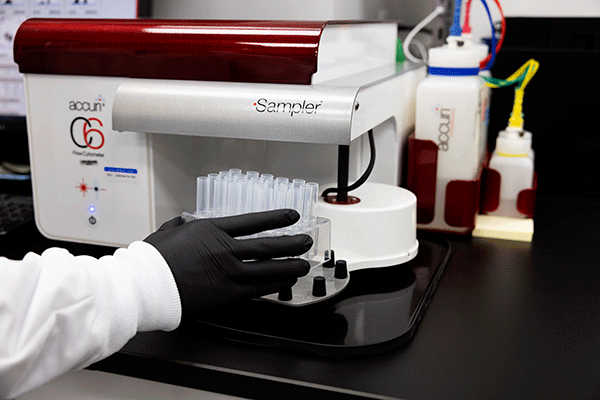FDA Draft Guidance on Chemical Analysis for Biocompatibility Assessment - Part 1
Key Takeaways
Within the last five years, there has been significant advancement in chemical analysis and toxicological risk assessment guidelines. Two significant ISO 10993 guidelines on these topics, Part 18 (in 2020) and Part 17 (in 2023) were revised and published. Last year FDA also issued a draft guidance on chemical analysis for biocompatibility assessment of medical devices. This draft guidance provides critical insights on the extractable testing recommendations for medical devices and some of the methodological expectations for chemical extractables studies included in premarket submissions. The guidance also aims to address potential gaps the FDA has identified as leading to inconsistencies across different labs and deficiencies in premarket submissions. Chemical analysis and toxicological risk assessment can be an alternative to testing for certain biological endpoints. This approach is not new; however, its practical application has often been met with frustration. While the expectation is that the approach can potentially shorten the time needed to complete biocompatibility testing by evaluating multiple endpoints at once and can reduce animal testing, in reality it may not save time or money to use chemical analysis in place of biological testing for many devices that do not have prolonged or invasive contact. As a result, many manufacturers opt for animal testing instead. However, both approaches present their own challenges. Manufacturers must make informed decisions about biocompatibility strategies and should consult regulatory experts to determine the most appropriate choice for their device. The purpose of this 2-Part post is to explain some of the key takeaways from the draft guidance on the chemical analysis. In Part 1, we will focus on the recommendations for solvent selections and extraction conditions, providing insights into optimizing these crucial steps. In Part 2, we will focus on the recommendations for analytical methods and reference standards.

Solvent Selections
Extractable testing begins with the selection of appropriate solvents for testing and it should be based on the understanding of the device materials of construction. If a solvent is not compatible, it will lead to unintended destruction of the device during extractable testing. Swelling can occur with certain solvents for some devices, however if an unintended swelling leads to material disintegration and particulate generation, it can interfere with extractable analysis. If unintended swelling occurs with an aqueous solvent, clinical implications should be considered. For medical devices with novel materials, feasibility studies are often recommended to identify compatible solvents. If destructive swelling is observed with a particular solvent, then the recommended solution is to find an alternative solvent of similar polarity. If a compatible semi-polar or non-polar solvent cannot be identified, a solvent mixture can be an option, however the solvent selection should be justified. If a suitable solvent cannot be identified, getting FDA feedback early through the Pre-Sub process is recommended. For devices with limited or prolonged contact duration, destructive swelling may be an appropriate justification for using a semi-polar solvent instead of a non-polar one. If compatible solvents cannot be identified, data from extractables studies would not be meaningful for toxicological risk assessment and additional information to address the relevant biological endpoints including biological test results, manufacturing information, and material information should address biocompatibility endpoints.
Extraction Conditions
Limited (<24 hours) and prolonged (1-30 days) contact devices require extractions from polar and non-polar solvents. Long-term contact devices require polar, semi-polar, and non-polar solvents. Extractions should estimate worst-case exposure settings. Limited contact devices should be tested under exaggerated or clinically relevant conditions, while prolonged and long-term devices should be tested under exhaustive or exaggerated conditions.
When selecting the temperature for the extraction, the thermal properties of the materials used in the construction of the device should be understood. Any visible changes in the device or device extracts during or post-extraction would indicate solvent incompatibility, device degradation, or other manufacturing issues. When particulates are present in test extracts, root-cause analysis should be performed to identify the source of the problem. If any additional steps such as filtration or centrifugation or solvent replenishing were used, it should be justified.
The test article should be completely covered by the solvent; extraction volumes should be minimized according to the sensitivity needed for chemical analysis. It is always recommended to refer to ISO 10993-12 for guidance on extraction temperatures and times. For exaggerated extractions, both temperature and time should exceed clinical use. Exhaustive extractions must generate enough extractables to show exhaustion is achieved. The test article, in its final form, or a representative coupon (prepared with relevant manufacturing processes, including sterilization and packaging) should be used for the extraction. It is expected that the extractions are done in replicate (for example, triplicate). The highest amount from any replicate from any solvent should be used as a worst-case exposure estimate, not the sum or average. Replicate extraction may not be necessary if three or more devices are pooled, especially for very small devices requiring sufficient extract volume for analysis. However, if variability is expected within devices or extractions from other analytical procedures indicate variability, pooling may not be appropriate.
Check back soon for Part 2 and our concluding remarks.
MED Institute Capabilities
MED Institute specializes in providing comprehensive support for medical device chemical analysis and toxicological risk assessment. Our team of professionals offers expert guidance on selecting appropriate solvents, assessing gaps in protocols, resolving AET calculations, and interpreting analytical results in alignment with ISO 10993-18. Our experts are equipped to resolve challenges during the extractable testing or respond effectively to biocompatibility queries from regulatory agencies. We help clients with developing robust toxicological risk assessments, identifying toxicological hazards, assessing patient exposure, and developing margins of safety in alignment with ISO 10993-17. By engaging with our team of experts, several manufacturers have designed safer products, and accelerated their regulatory submissions and successful market entry.
Contact us today to begin your project discussion 855.463.1633 | askmed@medinstitute.com | medinstitute.com.
Get email about news, services, and events from MED Institute.
OUR COMMITMENT
We are committed to consistently performing services with high quality, that deliver exceptional results, and add value to the client’s business.
For client surveys sent in 2024, we received ratings of 4.98/5 points (13).

